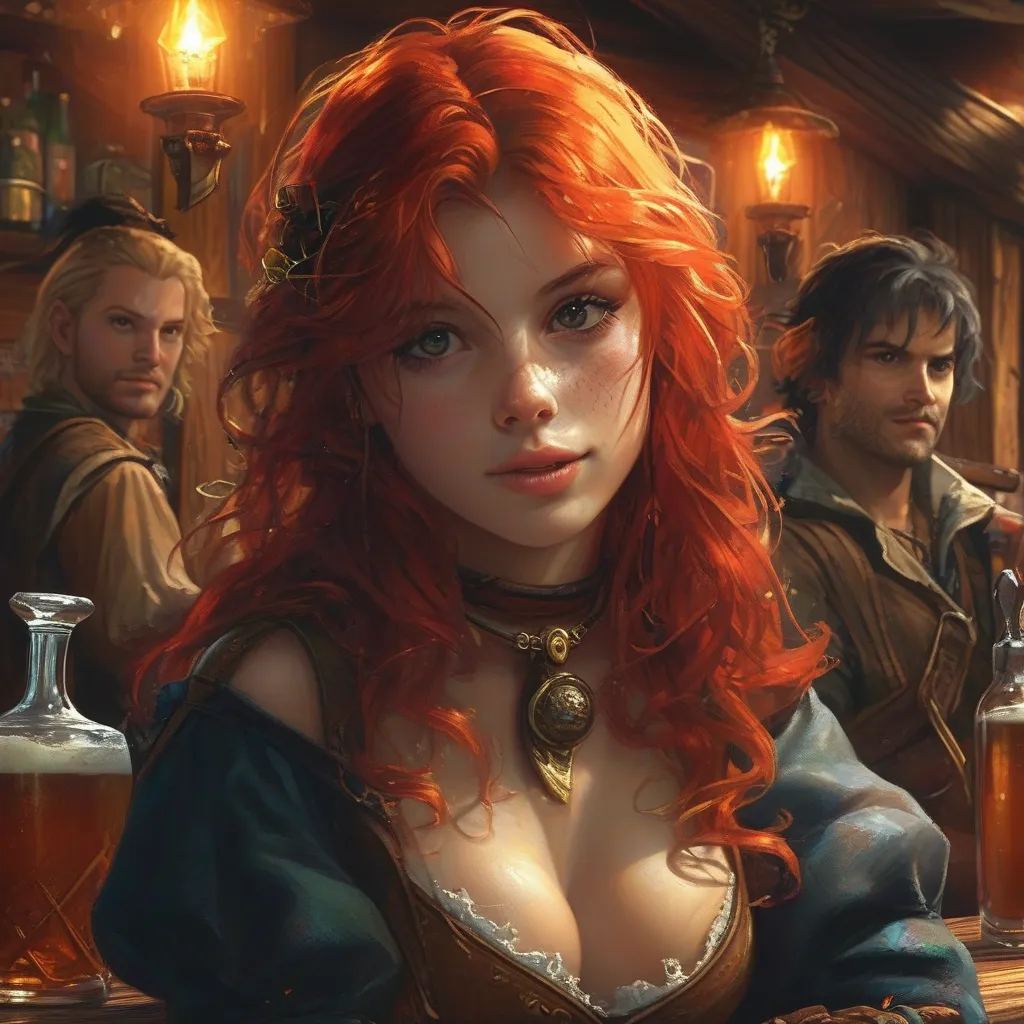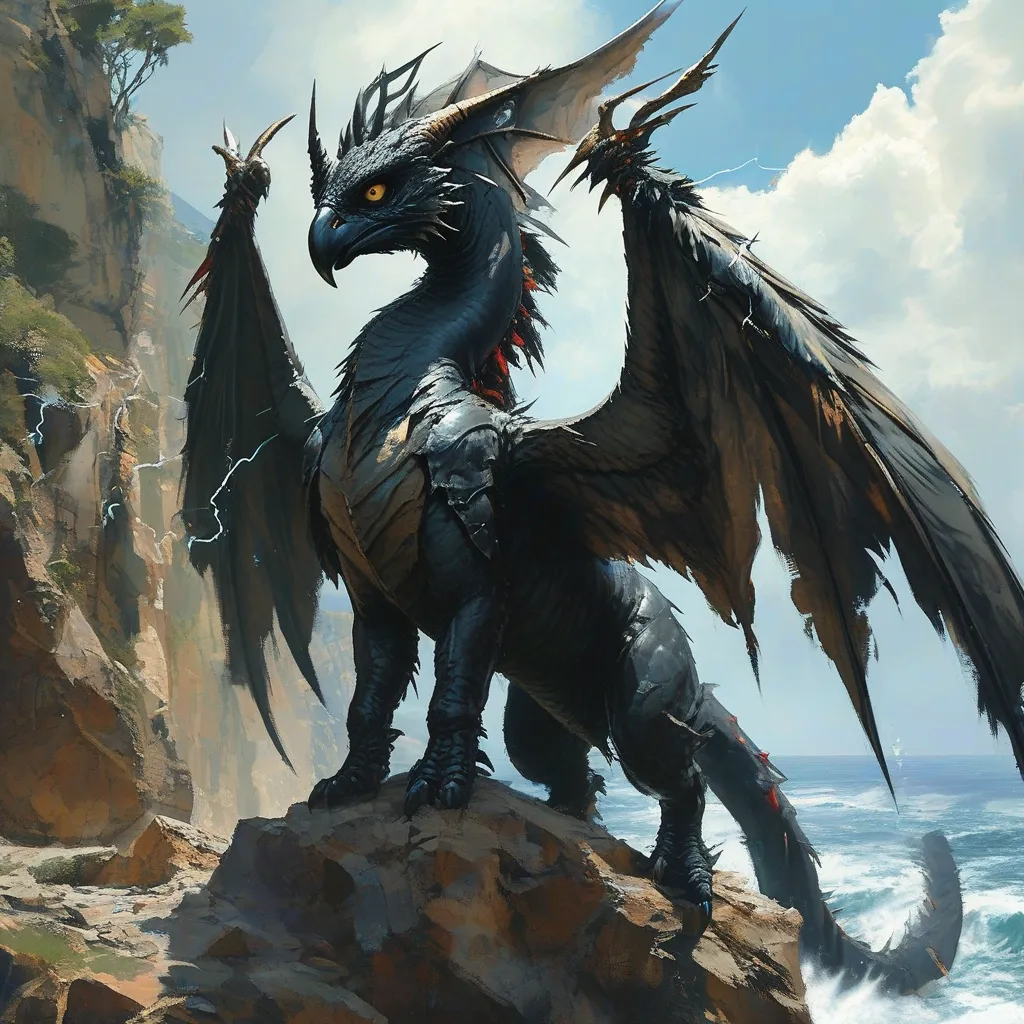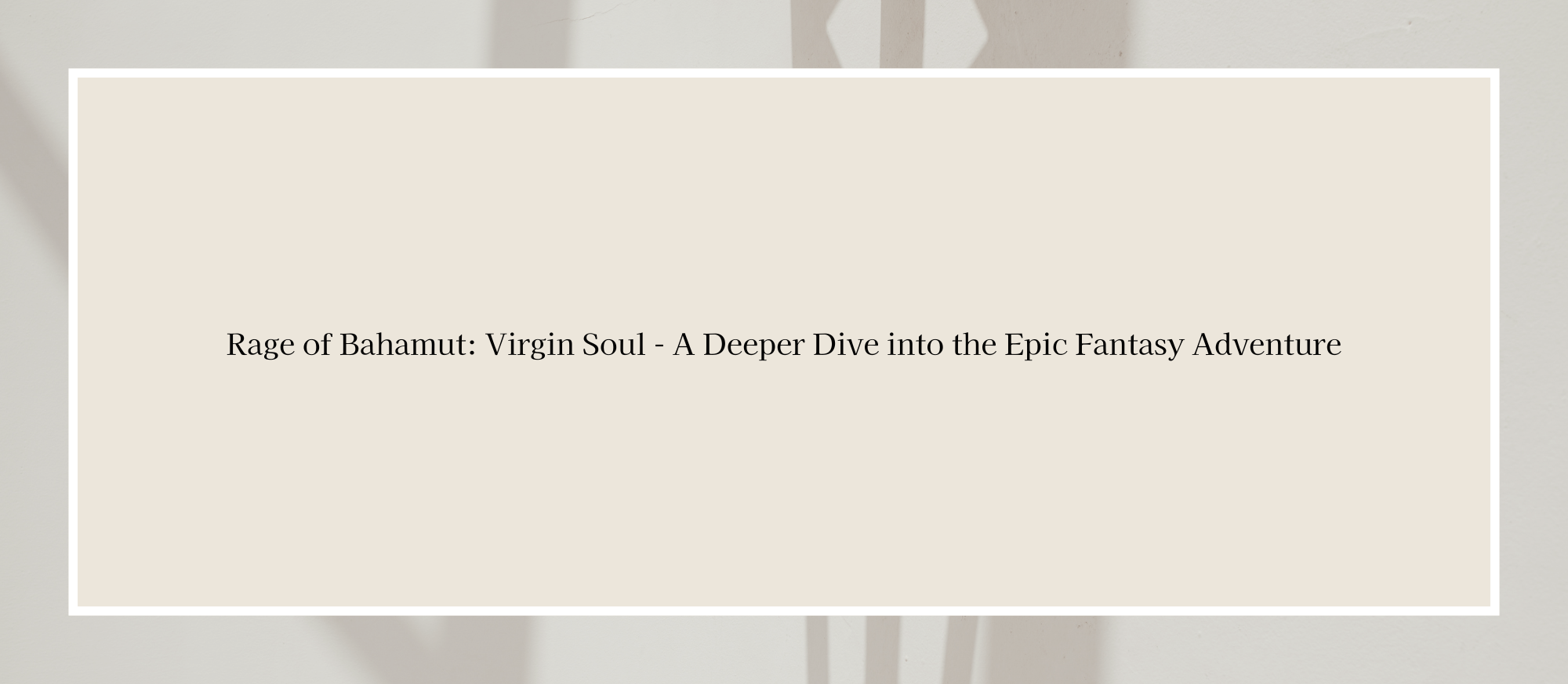Article Structure:
1. Introduction to Rage of Bahamut: Virgin Soul
- Provide an overview of the anime, including its release date and production studio.
- Highlight how it serves as a sequel to "Rage of Bahamut: Genesis," continuing the epic fantasy saga.
- Mention the central plot, focusing on the clash between humans, gods, and demons.
2. Character Profiles and Development
- Introduce the main characters such as Nina Drango, Charioce XVII, and Favaro Leone.
- Discuss their motivations, growth, and how their relationships drive the story.
- Highlight the dynamic character arcs and the interplay between heroes and villains.
3. Plot Overview and Key Story Arcs
- Outline the main plot points and significant story arcs, such as the rebellion against Charioce XVII and Nina's journey of self-discovery.
- Discuss how these arcs build upon the foundations laid in "Rage of Bahamut: Genesis" and introduce new conflicts and mysteries.
- Mention the blend of action, romance, and political intrigue that keeps viewers engaged.
4. Visuals and Animation Quality
- Highlight the anime's stunning visuals and animation quality, including the use of color, light, and detailed character designs.
- Discuss how MAPPA's animation studio brings the world of "Rage of Bahamut: Virgin Soul" to life with dynamic action scenes and immersive fantasy settings.
- Explore the impact of the visual storytelling on the overall viewing experience.
5. Impact on the Fantasy Genre and Fan Reception
- Analyze how "Rage of Bahamut: Virgin Soul" has influenced the fantasy anime genre, particularly in its portrayal of complex moral dilemmas and epic battles.
- Discuss fan reception, any awards or recognitions the series has received, and its role in expanding the world of "Rage of Bahamut."
- Highlight how the series has contributed to the popularity of fantasy anime and continues to engage a global audience.
Contents
Introduction to Rage of Bahamut: Virgin Soul

"Rage of Bahamut: Virgin Soul" is a captivating anime series that premiered in April 2017, produced by the renowned animation studio MAPPA. This series is a direct sequel to the widely acclaimed "Rage of Bahamut: Genesis," continuing the epic fantasy saga that has enthralled audiences worldwide. Set ten years after the events of its predecessor, "Virgin Soul" dives deeper into a world where humans, gods, and demons are locked in a fierce and complex struggle for power.
At the heart of "Rage of Bahamut: Virgin Soul" is the central conflict between humans, led by the tyrannical King Charioce XVII, and the gods and demons who once held sway over the world. Charioce, wielding forbidden powers, has subdued both divine and infernal forces, leading to a tense and precarious balance. The story follows Nina Drango, a spirited young woman with a dangerous secret—she can transform into a dragon. As Nina becomes entangled in the power struggles of this world, she finds herself caught between loyalty and love, duty and desire.
What makes "Rage of Bahamut: Virgin Soul" stand out is its ability to build on the rich narrative foundation laid by "Rage of Bahamut: Genesis." The sequel not only continues the story but expands it, introducing new characters, deeper political intrigue, and more intense battles. The series explores the moral complexities of its characters, showing how even the most righteous can fall victim to their desires and how the darkest villains may have motivations rooted in pain and loss.
As the story unfolds, viewers are treated to a visually stunning world where the animation brings every detail to life—from the majestic cityscapes to the terrifying battle sequences. MAPPA’s commitment to high-quality animation ensures that each episode is a visual feast, with dynamic action scenes and intricate character designs that enhance the storytelling.
The clash between humans, gods, and demons is not just a battle for power; it’s a reflection of the larger themes at play in the series. "Rage of Bahamut: Virgin Soul" delves into the consequences of power, the cost of freedom, and the eternal struggle between good and evil. The series asks difficult questions about justice and retribution, making it a thought-provoking experience for viewers.
"Rage of Bahamut: Virgin Soul" has been praised for its ability to combine action, fantasy, and deep emotional storytelling. It has carved out a special place in the hearts of anime fans, thanks to its compelling characters, complex narrative, and breathtaking visuals. Whether you're a fan of the original series or new to the world of Bahamut, "Virgin Soul" offers an epic adventure that is both thrilling and deeply moving.
In conclusion, "Rage of Bahamut: Virgin Soul" is more than just a continuation of an existing story; it’s an expansion of a universe where the stakes are higher, the battles more intense, and the characters more complex. With its rich narrative and stunning animation, the series continues to captivate audiences, ensuring its place as a standout in the fantasy genre.
Character Profiles and Development

"Rage of Bahamut: Virgin Soul" brings together a diverse and compelling cast of characters, each with their own motivations, struggles, and growth throughout the series. At the heart of the story is Nina Drango, a cheerful and optimistic young woman who hides a dangerous secret—her ability to transform into a powerful red dragon. Nina’s journey is one of self-discovery and acceptance as she grapples with her feelings for King Charioce XVII and the implications of her dragon heritage. Her character arc is marked by moments of intense emotion, bravery, and the constant tension between her human desires and her dragon instincts.
Charioce XVII, the enigmatic and ruthless king, serves as both an antagonist and a complex figure whose motivations are rooted in his desire to protect humanity at any cost. Charioce’s character development is one of the most intriguing aspects of the series. Initially portrayed as a cold and calculating ruler, his relationship with Nina reveals a more vulnerable and conflicted side. His willingness to use forbidden powers and wage war against gods and demons raises questions about his moral compass, making him a character who blurs the lines between hero and villain. Charioce’s interactions with Nina drive much of the narrative, creating a dynamic interplay that adds depth to both characters.
Favaro Leone, the beloved rogue from the first season, returns in "Virgin Soul" with a more subdued but equally important role. Favaro, once a carefree bounty hunter, is now a man burdened by the events of the past and the consequences of his actions. His relationship with Kaiser, his former friend turned enemy, is fraught with tension and unresolved conflict. Favaro’s growth is seen in his struggle to reconcile his past with his desire to do what is right in a world that has become increasingly chaotic. His interactions with Nina and other characters highlight his evolution from a self-serving adventurer to someone who cares deeply about the fate of those around him.
The relationships between these main characters are central to the story's progression. Nina’s unrequited love for Charioce, coupled with her internal struggle to control her dragon form, creates a powerful emotional arc that resonates throughout the series. Charioce’s complex feelings for Nina and his unyielding dedication to his mission add layers of intrigue and tension. The dynamic between Favaro and Kaiser, rooted in betrayal and brotherhood, provides a rich backdrop for exploring themes of redemption and loyalty.
What sets "Rage of Bahamut: Virgin Soul" apart is the way it handles its characters' growth, not just through their personal journeys but also through their interactions with one another. Heroes and villains are not easily defined; instead, the series presents a spectrum of morality where motivations are constantly questioned, and alliances shift. This complexity makes the character arcs all the more engaging, as viewers are drawn into the evolving relationships and the moral dilemmas faced by each character.
In conclusion, the character development in "Rage of Bahamut: Virgin Soul" is both intricate and emotionally charged. Nina, Charioce, and Favaro are more than just protagonists in a fantasy world; they are characters with depth, flaws, and the capacity for change. Their relationships drive the narrative forward, creating a story that is as much about personal growth as it is about epic battles and world-altering conflicts. As the characters evolve, so too does the story, making "Rage of Bahamut: Virgin Soul" a captivating exploration of what it means to be a hero, a villain, and something in between.
Plot Overview and Key Story Arcs

"Rage of Bahamut: Virgin Soul" continues the thrilling narrative established in "Rage of Bahamut: Genesis," diving deeper into a world where humans, gods, and demons vie for control. The story is set ten years after the events of the original series, with the human race, led by King Charioce XVII, having gained the upper hand over the once-powerful gods and demons. This shift in power dynamics sets the stage for the central conflict: a rebellion against Charioce’s oppressive rule.
At the heart of the plot is Nina Drango, a seemingly ordinary girl who harbors the extraordinary ability to transform into a dragon. Nina's journey is one of self-discovery, as she struggles to understand and control her powers while being drawn into the political and supernatural turmoil engulfing the world. Her arc is marked by her growing feelings for Charioce, which complicates her involvement in the rebellion. Nina’s internal conflict and her relationships with other characters, such as the returning rogue Favaro Leone, add emotional depth to the series.
The rebellion against Charioce XVII forms a significant story arc in "Virgin Soul." Charioce’s reign is characterized by his ruthless crackdown on gods and demons, leading to widespread dissent among those who believe in the old order. The rebellion is not just a physical battle but a moral one, as characters grapple with the justification of their actions in a world where the lines between good and evil are increasingly blurred. Charioce himself is a complex character, driven by a desire to protect humanity, even if it means resorting to extreme measures. His interactions with Nina, who opposes his methods yet is drawn to him, create a tension that propels the narrative forward.
The series also explores the broader implications of Charioce’s actions, particularly the impact on the world’s balance of power. As gods and demons find themselves subjugated, new alliances are formed, and old rivalries are reignited. The mystery surrounding Charioce’s ultimate goals adds a layer of intrigue, keeping viewers guessing as the story unfolds. The blend of action, romance, and political intrigue is expertly woven into the narrative, ensuring that each episode is packed with excitement and emotional resonance.
Another key aspect of "Virgin Soul" is its ability to build upon the foundations laid in "Rage of Bahamut: Genesis." The return of familiar characters like Favaro and Kaiser brings continuity to the story while introducing new dynamics and conflicts. These characters, now older and more battle-weary, bring with them the weight of their past experiences, adding depth to their interactions and decisions. The new characters, including Nina and Charioce, enrich the story, bringing fresh perspectives and challenges to the established world.
The series also introduces new mysteries that intertwine with the main plot, such as the origins of Nina’s powers and the true nature of the force driving Charioce’s actions. These mysteries add layers to the narrative, inviting viewers to speculate and anticipate the revelations that are gradually unveiled. The interplay between the different story arcs keeps the plot dynamic, ensuring that the pacing remains engaging throughout.
In conclusion, "Rage of Bahamut: Virgin Soul" masterfully combines action, romance, and political intrigue, creating a rich and immersive story that builds upon its predecessor while introducing new conflicts and mysteries. The rebellion against Charioce XVII, Nina’s journey of self-discovery, and the exploration of moral complexities keep viewers captivated, making "Virgin Soul" a standout in the fantasy genre.
Visuals and Animation Quality

"Rage of Bahamut: Virgin Soul" is a visual masterpiece, brought to life by the renowned animation studio MAPPA. The series showcases stunning visuals and top-tier animation quality, making it a feast for the eyes and an immersive experience for viewers. From the vibrant color palette to the intricate character designs, every frame of the anime reflects the meticulous attention to detail that MAPPA is known for.
One of the standout features of "Virgin Soul" is its use of color and light to enhance the mood and atmosphere of the series. The rich, warm tones used in scenes of intense emotion contrast beautifully with the cooler, darker hues that dominate the battle sequences, creating a dynamic visual narrative that draws viewers into the world of Bahamut. The careful application of light and shadow adds depth to the settings, from the grandiose cityscapes to the eerie, otherworldly realms inhabited by gods and demons.
MAPPA’s expertise in animation is evident in the fluidity and energy of the action scenes. The battles in "Virgin Soul" are not just visually spectacular but also choreographed with precision, allowing for a seamless blend of fast-paced combat and character-driven moments. The dynamic camera angles and smooth transitions between scenes keep the action engaging and the stakes high, ensuring that viewers are always on the edge of their seats. The transformation sequences, particularly Nina’s shift into her dragon form, are a highlight, showcasing the studio’s ability to combine traditional animation techniques with modern digital effects to create something truly breathtaking.
The character designs in "Virgin Soul" are another testament to the high production values of the series. Each character is rendered with an incredible level of detail, from the elaborate costumes that reflect their roles and personalities to the subtle expressions that convey their inner turmoil. The animation captures the nuances of human and non-human characters alike, bringing them to life in a way that feels both realistic and fantastical. The designs of the gods and demons are particularly striking, blending elements of mythology with original fantasy concepts to create beings that are both awe-inspiring and terrifying.
MAPPA’s commitment to visual storytelling is also evident in the way the settings are depicted. The world of "Rage of Bahamut: Virgin Soul" is rich with detail, from the bustling streets of the royal city to the desolate, otherworldly landscapes that lie beyond. Each location is crafted to enhance the narrative, with the settings often reflecting the themes and emotions of the story. The grandeur of the human kingdom, with its towering structures and imposing architecture, contrasts sharply with the wild, untamed lands of the gods and demons, reinforcing the tension between these opposing forces.
The impact of the visual storytelling on the overall viewing experience cannot be overstated. The visuals in "Virgin Soul" do more than just provide a backdrop for the action; they are integral to the storytelling, adding layers of meaning and emotion to the narrative. The animation quality elevates the series, making it not only a compelling story but also a visual spectacle that stands out in the fantasy genre.
In conclusion, "Rage of Bahamut: Virgin Soul" is a visual triumph, with MAPPA’s animation bringing the world of Bahamut to life in vivid detail. The use of color, light, and intricate character designs, combined with dynamic action scenes and immersive settings, creates a viewing experience that is both captivating and memorable. Whether you’re drawn in by the epic battles or the intricate fantasy world, the visuals of "Virgin Soul" are sure to leave a lasting impression.
Impact on the Fantasy Genre and Fan Reception

"Rage of Bahamut: Virgin Soul" has made a significant mark on the fantasy anime genre, particularly through its exploration of complex moral dilemmas and epic, large-scale battles. The series, as a continuation of "Rage of Bahamut: Genesis," expands upon the rich world established in its predecessor, delving deeper into the conflicts between humans, gods, and demons. This intricate portrayal of power struggles and the blurred lines between good and evil adds a layer of sophistication to the fantasy genre, setting "Virgin Soul" apart from more traditional narratives.
One of the standout aspects of "Virgin Soul" is its willingness to tackle challenging moral questions, often leaving viewers to ponder the righteousness of the characters' actions. The narrative doesn’t shy away from showing the consequences of power and ambition, particularly through the character of Charioce XVII, whose authoritarian rule sparks a rebellion. This nuanced approach to storytelling has resonated with fans, contributing to the series’ acclaim within the anime community.
The reception of "Rage of Bahamut: Virgin Soul" has been overwhelmingly positive, both in Japan and internationally. Fans have praised the series for its compelling characters, intricate plot, and stunning animation—elements that come together to create a truly immersive viewing experience. The blend of action, romance, and political intrigue has kept audiences engaged, and the series has garnered a dedicated fanbase that continues to grow.
In terms of accolades, "Virgin Soul" has received several recognitions for its contributions to the fantasy genre. The series has been noted for its exceptional animation quality, with particular praise given to the dynamic action sequences and the detailed world-building that brings the story to life. These visual elements, combined with a strong narrative, have made "Virgin Soul" a standout in a crowded genre, earning it a place among the most respected fantasy anime of recent years.
Beyond its immediate impact, "Virgin Soul" has also played a role in expanding the "Rage of Bahamut" universe, introducing new characters and storylines that have deepened the lore of the franchise. This expansion has allowed for a richer exploration of the world and its inhabitants, providing fans with new content to enjoy and analyze. The series' success has also sparked interest in the broader "Rage of Bahamut" franchise, leading to increased engagement with the original game and other related media.
"Rage of Bahamut: Virgin Soul" has also contributed to the growing popularity of fantasy anime on a global scale. Its success highlights the genre's ability to captivate audiences with stories that are both fantastical and deeply human. The series' exploration of universal themes, such as love, power, and the search for identity, resonates with viewers across cultural boundaries, ensuring its continued relevance and appeal.
In conclusion, "Rage of Bahamut: Virgin Soul" has made a lasting impact on the fantasy anime genre through its complex storytelling, moral exploration, and high production values. Its positive reception among fans and critics alike underscores its significance in the anime landscape, while its contribution to the "Rage of Bahamut" franchise has helped solidify its place in the pantheon of fantasy classics. As the series continues to engage audiences worldwide, its legacy within the genre only grows stronger.




